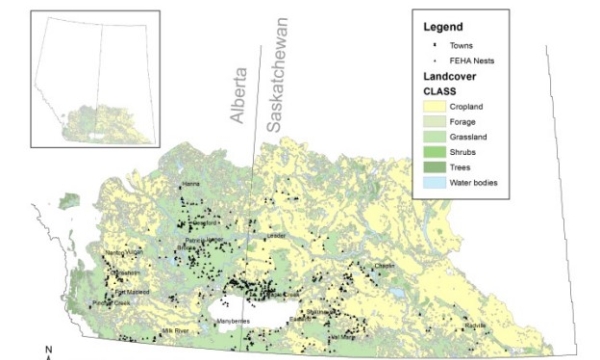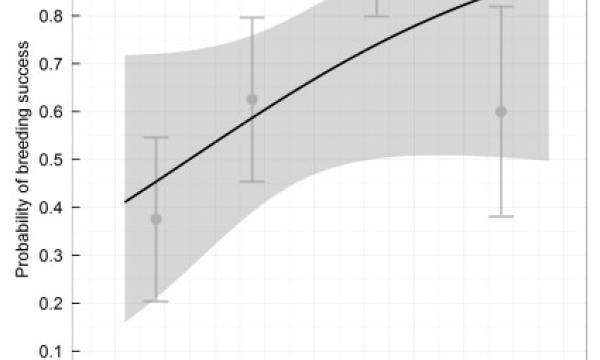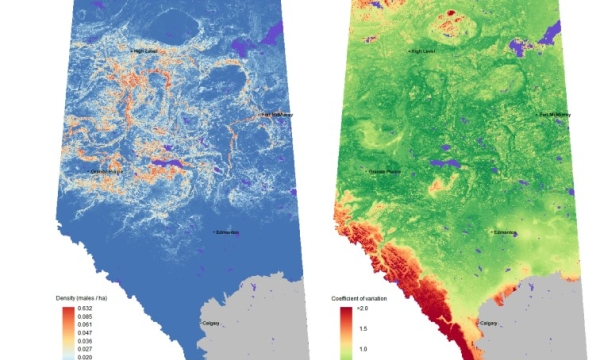Land Management Resources
Resource
Authors
Native Plant Working Group
These guidelines provide a clear, consistent and integrated information package about using native plant materials throughout Alberta where the revegetation goal is to re-establish a native plant...
Resource
This Fact Sheet gives guidance regarding the use of native plant materials for revegetation of industrial developments in Alberta. A native plant is defined as a species occurring within its historic...
Resource
Authors
Corey Scobie
Alan Marsh
Ryan Fisher
Erin Bayne
Troy Wellicome
Petroleum development has occurred at a rapid pace on the grasslands of Alberta and Saskatchewan. To avoid potential impacts of development on burrowing owls, federal and provincial governments...
Resource
Authors
Erin Bayne
Cameron Nordell
Jesse Watson
Melynda Johnson
Adam Moltzahn
Janet Ng
The Ferruginous Hawk (FEHA) has been listed as an Endangered Species under the Alberta Wildlife Act by the provincial government since 2006 (Alberta FEHA Recovery Team 2009); and were re-listed as a...
Resource
Authors
Hedwig Lankau
Erin Bayne
Craig Machtans
The boreal forest of western Canada is being dissected by seismic lines used for oil and gas exploration. The vast amount of edge being created is leading to concerns that core habitat will be reduced...
Resource
Authors
Tyler Flockhart
Greg Mitchell
Richard Krikun
Erin Bayne
Successful conservation of migratory birds demands we understand how habitat factors on the breeding grounds influences breeding success. Multiple factors are known to directly influence breeding...
Resource
Authors
Jeffrey Ball
Péter Sólymos
Fiona Schmiegelow
Samuel Hache
Jim Schieck
Erin Bayne
Understanding factors that affect the distribution and abundance of species is critical to developing effective management plans for conservation. Our goal was to quantify the distribution and...
Resource
Conservation management is impeded by the lack of baseline data for many non-passerine, cryptic, or nocturnal species that are inadequately sampled by traditional monitoring programs. The recent rise...
Resource
Authors
Cameron Nordell
Erin Bayne
The Rusty Blackbird ( Euphagus carolinus ) was listed as Special Concern on Schedule 1 of the federal Species at Risk Act in March 2009 because of large and longterm declines in population size. The...
Resource
Authors
Sarah Ludlow
Carolyn Gaudet
Stephen Davis
Grassland bird populations have declined significantly over the past century, largely due to anthropogenic habitat loss and degradation. It is estimated that approximate 20% of original native...










